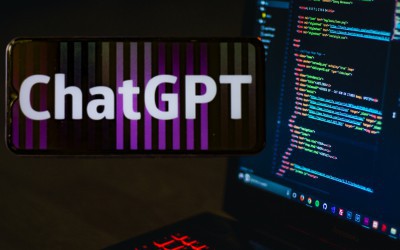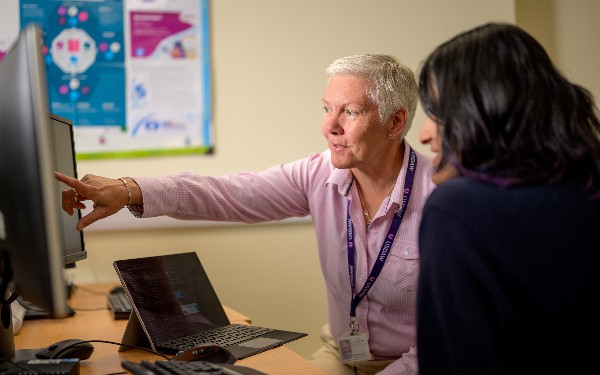 Continuous Integration in AWS Using Jenkins Pipelines: Best Practices and Strategies Continuous Integration in AWS Using Jenkins Pipelines: Best Practices and Strategies May 3rd 2023, 23:05, by lidor ettinger Developing and releasing new software versions is an ongoing process that demands careful attention to detail. The ability to monitor and analyze the entire process is critical for identifying any potential issues and implementing effective corrective measures. The concept of continuous integration becomes relevant at this point. |  Revolutionize JSON Parsing in Java With Manifold Revolutionize JSON Parsing in Java With Manifold May 3rd 2023, 19:20, by Shai Almog Java developers have often envied JavaScript for its ease of parsing JSON. Although Java offers more robustness, it tends to involve more work and boilerplate code. Thanks to the Manifold project, Java now has the potential to outshine JavaScript in parsing and processing JSON files. Manifold is a revolutionary set of language extensions for Java that completely changes the way we handle JSON (and much more).
![Modern Java: Make Java JSON Manifold, Part 1]() Getting Started With Manifold The code for this tutorial can be found on my GitHub page. Manifold is relatively young but already vast in its capabilities. You can learn more about the project on their website and Slack channel. To begin, you'll need to install the Manifold plugin, which is currently only available for JetBrains IDEs. The project supports LTS releases of Java, including the latest JDK 19. |  Kubernetes Add-On Lifecycle Management With Sveltos Kubernetes Add-On Lifecycle Management With Sveltos May 3rd 2023, 18:58, by Gianluca Mardente Kubernetes itself is not a complete solution. To build a production cluster, you need various additional add-ons. If you are managing multiple clusters, that is not an easy task. Sveltos is an open-source project that provides declarative APIs allowing the deployment of Kubernetes add-ons across multiple Kubernetes clusters. Both Helm charts and resource YAMLs can be passed to Sveltos. |  Here's What Defines 2023 for Mac App Developers Here's What Defines 2023 for Mac App Developers May 3rd 2023, 18:51, by Oleksandr Kosovan For the seventh year in a row, Setapp surveys Mac developers about the state of the industry. From AI to app distribution challenges, developers share their take. As app developers, we know that knowing what everyone else is doing is key to effective work and bringing useful products to market. This year, Setapp talked to 701 developers from across the globe about app distribution, development, AI (yes, including ChatGPT), the impact of global events, and future plans. |  Why Developers Should Care About FinOps Why Developers Should Care About FinOps May 3rd 2023, 18:40, by Sherilyn Kamga As the world of cloud computing continues to evolve, the need for effective FinOps strategies is becoming increasingly important. In this article, we will explore the critical role of developers in effective FinOps strategies and the benefits of FinOps for technical expertise and career growth. Defining FinOps: Why Developers Are Critical to the Equation Let's begin by briefly revisiting the definition of FinOps. |  The Benefits of Implementing GitOps in Your CI/CD Pipeline The Benefits of Implementing GitOps in Your CI/CD Pipeline May 3rd 2023, 18:31, by Charles Ituah If you are thinking about incorporating GitOps into your digital transformation strategy, it is likely that you are seeking to simplify your internal production environment procedures. In this article, we will present the advantages of GitOps and demonstrate how it promotes proper delegation of workflow responsibilities within teams and enhances transparency throughout the development process. Implementing Continous Deployment with GitOps Cloud-native applications are now being implemented with Continuous Deployment by companies using GitOps. GitOps can simplify the deployment of cloud-native applications in real-time by providing a single source of truth for declarative infrastructure and workloads, thereby helping software development teams. GitOps is an operational framework that utilizes DevOps and is considered to be a best practices tool for improving infrastructure automation in DevOps. |  Zipping up the Lambda Architecture for Faster Performance Zipping up the Lambda Architecture for Faster Performance May 3rd 2023, 18:20, by Henry Han The Lambda architecture has been common practice in big data processing. The concept is to separate stream (real-time data), and batch (offline data) processing, and that's exactly what we did. These two types of data of ours were processed in two isolated tubes before they were pooled together and ready for searches and queries. Then we run into a few problems: |  Privacy Risk of ChatGPT for Software Developers Privacy Risk of ChatGPT for Software Developers May 3rd 2023, 18:10, by Fawad Malik ChatGPT is a relatively new technology that is set to revolutionize how software developers interact with AI. With its ability to generate code autonomously from text, ChatGPT could drastically reduce development time and complexity while allowing developers an unprecedented level of control over their projects. However, despite the advantages it provides all users, one question persists: what privacy risks does chatGPT introduce for software developers? According to ExpressVPN, no matter what type of tool or solution you use for software development projects, data privacy is significantly important to protect your data from marketing companies and malicious persons. |  Getting Started With Prometheus Workshop: Using Advanced Queries Getting Started With Prometheus Workshop: Using Advanced Queries May 3rd 2023, 18:09, by Eric D. Schabell Are you looking to get away from proprietary instrumentation? Are you interested in open-source observability but lack the knowledge to just dive right in? This workshop is for you, designed to expand your knowledge and understanding of open-source observability tooling that is available to you today. |  What Are Events? Always 'Decoupled' What Are Events? Always 'Decoupled' May 3rd 2023, 16:38, by Cameron HUNT In January 2021, I wrote that Event Driven Architecture (EDA) should be "Always Asynchronous." At precisely the same time, I argued that "the concept that we are actually trying to explain when we use the term 'Asynchronous' — within the context of EDA — might be better termed: 'Monologueous Communication'" (where no response is ever required). Nonetheless, 'Asynchronous' remains the dominant term in use today, and it was never certain that 'Monologueous Communication' was a good replacement. As the months have passed, however, I see more and more clearly how using the term 'Asynchronous' represents a major obstacle to our shared comprehension of EDA. Let me give you an almost unbelievable example that I witnessed from the CTO of the global computing giant AWS at its recent re: Invent Summit in December 2022. Of course, it goes without saying that the CTO of AWS is as well placed as anyone in the world to explain to an ignorant public was 'Asynchronous' actually means, for which reason I find this example so incredibly useful (please do not take it as a pointless exercise in AWS-bashing). |  Troubleshooting, Dynamic Logging, and Observability for .Net — A New Kid on the Block Troubleshooting, Dynamic Logging, and Observability for .Net — A New Kid on the Block May 3rd 2023, 16:28, by Sean Feldman A few years in software development do not equate to a linear amount of knowledge and information. So is true for the .NET ecosystem. The first release of .NET 1.0 saw the light of day in January 2002. The significance of the event was not the palindrome year. The new paradigm is offered to the traditional C++ MFC, VB, and classic ASP developers, supporting two main new languages, C#, and VB.NET. It started as a proprietary Windows technology, closed source language, primarily appealing to the companies on Microsoft Windows stack, tied to the sole IDE, Visual Studio. While .NET was a step forward, the pace and the options outside the designated use were abysmal. The situation took a sharp turn, with a substantial change in 2016 with the introduction of .NET Core. Starting from the heart of the .NET ecosystem, ASP.NET, the change has spread through the entire platform, leading to a complete re-imagination and makeover of runtime and language. Open source, cross-platform, and free for commercial use, .NET and C# became viable options for many projects that traditionally would go with another platform and languages. From web to mobile, from desktop to backend systems, in any cloud environment, .NET is a solid and viable option with outstanding experience and rich offerings. |  Top Strategies for Effective Mobile App Testing and Quality Assurance Top Strategies for Effective Mobile App Testing and Quality Assurance May 3rd 2023, 16:18, by Albert Smith Mobile app testing is imperative to the app development cycle, so it's equally essential to have well-defined strategies for it. The strategy can prove crucial to ensure the app's quality, security, and reliability. Well-planned strategies also help testers keep unnecessary costs at bay and ensure optimal utilization of resources. They also ensure that mobile apps maintain quality while providing an optimal user experience across different devices and operating systems and protecting user data and privacy. |  Legacy Systems Modernization: Trends and Predictions Legacy Systems Modernization: Trends and Predictions May 3rd 2023, 16:17, by Saad Qureshi Legacy systems, despite their outdated technology, continue to be the backbone of many organizations' operations. However, with the increasing demand for digital transformation, companies now realize the need to modernize these systems. Modernizing legacy systems involves upgrading, replacing, or integrating old technology with new, more efficient ones. This process enhances an organization's efficiency and improves its competitiveness in the market. Organizations may take help from a cloud services provider to make it effortless. |  Top 5 Considerations When Selecting an Event Broker Top 5 Considerations When Selecting an Event Broker May 3rd 2023, 16:07, by Himanshu Gupta In the last few years, event-driven architecture has gained tremendously in popularity. COVID-19 was a major factor in that rise which forced companies from many industries, especially retail, to adopt digital transformation. As companies rushed to establish their presence online, some had the appropriate tools and skills to manage the migration, while others did whatever was necessary to keep things running. As the storm settles, with COVID-19 thankfully in the rearview mirror, companies now have some breathing room to take a step back and solidify their architecture. |  Test Coverage Tutorial: Comprehensive Guide With Best Practices Test Coverage Tutorial: Comprehensive Guide With Best Practices May 3rd 2023, 16:02, by Harshit Paul Test coverage is a black-box testing method that entails testing elements included in the functional requirements specification, software requirements specification, and other required documents. Since the tests are derived from these documents, there is minimal or no chance of automation. For example, say you want to perform cross-browser testing on your web application to see if it renders properly in different browsers and operating systems. Your test coverage would equal the number of browser + OS combinations for which you have tested your web application's browser compatibility. |  Predictive Services Development With Java and Weka Predictive Services Development With Java and Weka May 3rd 2023, 15:55, by Aleksei Chaika In this article, we will briefly describe how to create predictive services with Java and Weka library (Waikato Environment for Knowledge Analysis, The University of Waikato). We will develop a Java application and consider a real-life example — the prediction of real estate prices in Seattle depending on parameters (area, distance from center, bedrooms). The application will learn real estate prices, and we will analyze its predictions. | |
Comments
Post a Comment